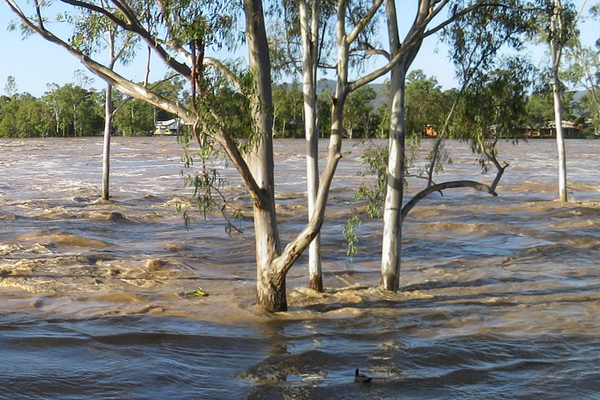19 Jun Flood Insurance in Springfield MA and Pioneer Valley
What We Think Springfield MA and Pioneer Valley Home and Business Owners Should Know About Flood Insurance
 As a resident or business owner in the Springfield, Massachusetts area, you know how unpredictable it can be to live or work so close to the Connecticut River, not to mention the region’s other formidable rivers – the Westfield, Chicopee, and Mill Rivers, which all converge into the Connecticut at the same point. Yes, we are surrounded by a lot of water!
As a resident or business owner in the Springfield, Massachusetts area, you know how unpredictable it can be to live or work so close to the Connecticut River, not to mention the region’s other formidable rivers – the Westfield, Chicopee, and Mill Rivers, which all converge into the Connecticut at the same point. Yes, we are surrounded by a lot of water!
The Connecticut River truly deserves the national recognition it gets for being the longest river in New England and it is certainly one of our community’s most treasured natural resources. However, setting up a home or business, or both, in proximity to such a large body of water, makes us much more susceptible to flooding from heavy rains, early spring thaws, ice jams, snowmelt and more.
So, whether you are a current homeowner or a business owner, or have plans to enter one of these markets soon, it is essential that you have a good understanding of property flood risks, your flood insurance options, and how to best protect your investments, both present and future, from a possible catastrophe.
McClure Insurance would like to offer our viewpoint on the current, and perpetually, in-flux, flood insurance market and how to traverse today’s expanding flood insurance options. We’ll start with a condensed historical perspective on how today’s flood insurance products came to be, including why a National Flood Insurance Program (NFIP) even exists. Trust us – this is much more interesting than it sounds!
A Brief History of Flood Insurance
 As far back as the late 1890s, private insurers sold flood insurance policies, and, up until the late 1920s, this private insurance system was mostly satisfactory to insureds and insurers. But, in 1927, the U.S. experienced the most destructive river flood in our country’s history – the Great Mississippi Flood – and the related losses, combined with additional flood losses the year after, were so significant that they were just too burdensome for private insurers to carry on their own. Unfortunately, the only alternative these companies could come up with is to stop offering flood policies.
As far back as the late 1890s, private insurers sold flood insurance policies, and, up until the late 1920s, this private insurance system was mostly satisfactory to insureds and insurers. But, in 1927, the U.S. experienced the most destructive river flood in our country’s history – the Great Mississippi Flood – and the related losses, combined with additional flood losses the year after, were so significant that they were just too burdensome for private insurers to carry on their own. Unfortunately, the only alternative these companies could come up with is to stop offering flood policies.
This meant property owners were left struggling to pay for costly, and sometimes irrevocable, water damage to their homes and businesses out of their own pockets. Over time, without any options for flood aid from the private sector, communities that had been damaged or destroyed by floods increasingly turned to the federal government for post-flood financial aid in the form of flood disaster relief.
While this was a highly inefficient method for assisting flood-ravaged communities, it continued on like this for four decades, through three U.S. Presidents – Truman, Eisenhower, and Johnson – and several more flood disasters. It wasn’t until 1968 that Congress was willing to pass a concrete solution to providing citizens with access to affordable flood insurance.
The Purpose Of A National Flood Insurance Program (NFIP)
The mission behind the National Flood Insurance Program of 1968 was to encourage local communities to agree to limit new development in floodplains (or so-called “Special Flood Hazard Areas”). By doing so, a compliant community’s citizens would be eligible to purchase flood insurance policies offered by private insurers in partnership with the federal government.
This would, in theory, create a flood insurance risk pool, incentivize flood risk management, and provide public disaster aid to affected property owners. Proponents of NFIP strongly believed that this program would greatly reduce the number of costly flood claims and make flood insurance more affordable.
Want to know how that idea went? Pretty much down the drain! Within a decade, the original concept of partnering with the private sector was replaced by the NFIP taking 100% responsibility for rate setting and risk bearing. In 1979, President Carter signed an order creating the Federal Emergency Management Agency (FEMA) and the NFIP was moved under FEMA.
Unfortunately, the NFIP has not always been well prepared for the extent of damage that Mother Nature’s wrath can cause. The organization did not fully anticipate how long, slow, and challenging recovery after a severe flood can be and, over subsequent decades, cumulative losses from storms financially drained the NFIP.
By the 21st century, the NFIP was billions of dollars in debt, with no foreseeable way out, so the government enacted the Biggert-Waters Flood Insurance Reform Act of 2012 (BW-12). This Act proposed dramatically increasing fees and flood insurance rates for homeowners and business owners in an effort to recoup the NFIP’s losses.
It’s likely that, if you reside in a flood zone, you felt the pain of this increase in one way, shape or form, especially since it coincided with flood mapping changes here in the Springfield, MA area. These map modifications rezoned many of our properties from low or moderate risk to a high risk for flooding, costing many home and business owners hundreds more a month in premiums. Double whammy!
For obvious reasons, all of these changes caused so much anxiety among property buyers and owners that the BW-12 Act actually led to a perceptible slow-down in real estate activity, especially in areas like ours where we are surrounded by powerful rivers, lakes and ponds.
So, the government enacted another act called the Homeowner Flood Insurance Affordability Act of 2014 (or HFIAA), which was supposed to rescind or delay many of the BW-12 rate increases. HFIAA still caused a flood of problems (pun intended) when it increased the surcharge on secondary homes by $250. More reforms have followed, but none seem to have reversed the course of the NFIP’s debt or the uncertainty of the flood insurance market.
The Hopeful Outlook For The Flood Insurance Market Today
The current NFIP plan is set to expire in September 2017; however, a new bill has been drafted that could extend the current program for another 10 years, which seems somewhat inevitable. Within this bill, however, there are some promising new proposals that could positively impact homeowners and business owners, including:
- Increasing coverage limits, making them more in line with a property’s actual replacement costs
- Enhancing flood insurance affordability and accessibility
- Providing private market access, accountability and competition
In addition to these encouraging recommendations, a more cost-effective flood insurance option may soon be coming to your community, in the form of private flood insurers. Yes, these folks are coming out from the rocks they’ve been hiding under since the 1920s, and this time they seem much more prepared to assist property owners with their flood insurance needs. Here are some interesting examples of this private insurers movement:
- Loyd’s of London uses syndicates – groups of companies or underwriters who join together to insure very high-valued property or high-hazard liability exposures – to write individually risk-rated flood insurance policies at premiums substantially lower than the (NFIP).
- Philadelphia Insurance Companies, in an unprecedented move, started to write Commercial Flood insurance as part of a package in favorable flood zones about three years ago. Like Lloyd’s, their coverage is much broader than the NFIP.
The team at McClure is taking a close look at these new insurance products, and we want to share some possible advantages and disadvantages of private flood insurance for homeowners and business owners like you to consider:
Possible Advantages of Private Flood Insurance
- You can access higher limits of coverage (in excess of $250,000) without having to purchase an Excess Flood Insurance policy
- In the event of damage to your home, business structure, and/or personal property, most private carriers pay the full replacement cost
- A typical policy includes additional living expense coverage for homeowners and Business Income Expense coverage for commercial property owners
- Most carriers do not require the 30-day waiting period that is mandated when enrolling in the NFIP
- Lower rates for homeowners and business owners
Possible Disadvantages of Private Flood Insurance
- While the NFIP has a renewal guarantee, there is no such guarantee with private insurers. Private insurers also have the right to cancel your coverage in the middle of your policy term.
- In the event that your private insurer does not renew your coverage or drops you for some reason, you can then enroll with NFIP; however, there is typically a 30-day wait period between when you buy a flood insurance policy and when it goes into effect.
- Because the private flood insurance market is still a very recent development, and relatively untested waters, mortgage lenders can sometimes be uneasy about a home covered by a private market flood insurer. If you’re currently looking to purchase a home, it is critical to ask whether your mortgage lender will accept private market flood insurance before you make your choice.
Navigating the complicated waters of the insurance industry, including making a choice between a private insurance carrier or an NFIP policy, is no easy task. And you should never feel like you have to cross this complex terrain on your own. At McClure Insurance, we are eager to share our experience and knowledge from serving the flood insurance needs of the Pioneer Valley’s business owners and homeowners for the past 90 years.
Today, more than ever, it’s critical that you fully understand your property’s flood risk, not just based on government flood maps, but also on your specific landscape, drainage and structural conditions. As your local insurance team, McClure is particularly suited to guide you through your best flood insurance coverage options and help you protect yourself, and the people and things you care about, in case of a flood catastrophe. Please contact us today at (800) 982-0929 to discuss all your home and business flood insurance needs.

